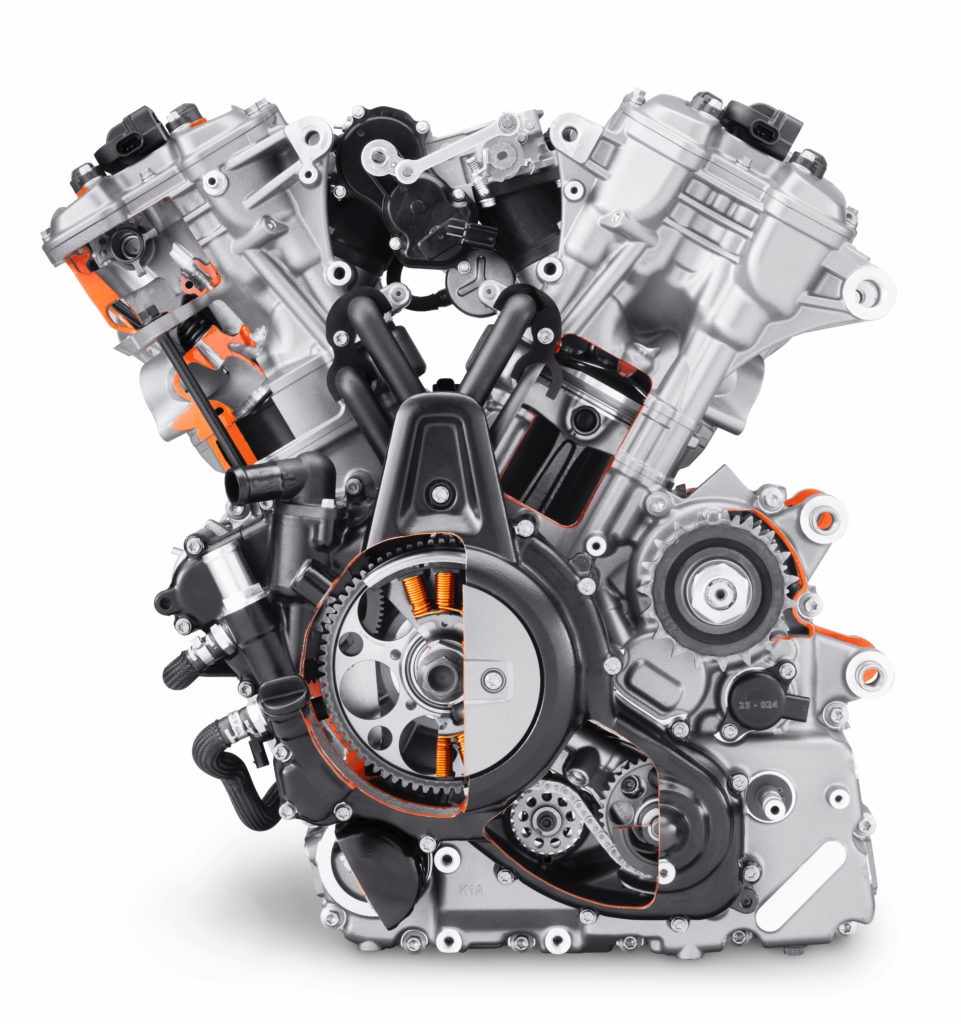
Photo by Harley-Davidson
The Sportster S uses a version of the liquid-cooled 1,252cc V-Twin Revolution Max in the thoroughly modern and warmly received Pan America adventure bike, but they’re not quite the same.
We were initially disappointed the 1250 “T” version in the new Sporty doesn’t have the 150-horse motor from the Pan Am, as it has a peak power rating of 121 ponies. The primary reason for the power downgrade is the low fuel tank stylistically required for the new Sportster S. The squat tank yields less airbox room (7.6 liters), so the 1250T engine can’t breathe at high revs as well as the Pan Am’s.
With the air intake somewhat restricted, H-D fitted smaller valves and used tighter ports into the cylinders, as well as different camshafts and revised geometry in the combustion chamber, to ensure strong responses from lower revs so it’s always ready to lunge forward. Liquid cooling keeps heat from varying wildly compared to an air-cooled motor, allowing tighter tolerances in the engine and a higher compression ratio, now at 12:1 instead of 10:1. It prefers premium fuel, but a knock sensor allows the use of lower-grade gas.
The Sportster retains the high-tech variable valve timing (VVT) of the Pan America, with altered phasing to suit the new motor. VVT is a new trick feature in motorcycling, hydraulically changing the camshaft timing based on inputs such as throttle position, engine revs, and the bike’s speed. A VVT engine has the potential to provide greater power at low and high revs compared to a motor with fixed cam timing. Harley’s traditional hydraulic lash adjusters are used here, which means expensive valve adjustments aren’t required.
Double overhead cams allow higher revs, while four valves per cylinder enable better breathing than the old overhead-valve arrangement and its two valves per cylinder. The RevMax’s two connecting rod journals are offset by 30 degrees, creating a 90-degree firing order that makes it sound slightly different than other 60-degree V-Twins. Objectionable vibration is quelled by a primary counterbalancer on the crankshaft and a secondary one in the front cylinder’s head between the dual cams.
The exhaust system is constructed from 304-series stainless steel in a 2-into-1-into-2 arrangement, with the stacked stainless steel mufflers housing catalytic converters. Heat is diverted from attacking a rider by a generous amount of shielding. A forward-facing air intake for the engine reduces noise, allowing more shouting to be emitted from the exhaust system. Engine weight is kept minimal by the use of lightweight magnesium cam, rocker, and primary covers finished in a rich-looking “chocolate satin” color.
These changes from the Pan Am result in a 10% increase in torque between 3,000–6,000 rpm and the same peak output of 94 lb-ft but 750 rpm sooner, at 6,000 revs. Horsepower peaks at 7,500 rpm, with another 2,000 rpm of headroom before hitting the 9,500-rpm redline, revealing some untapped potential inside the 1250T.


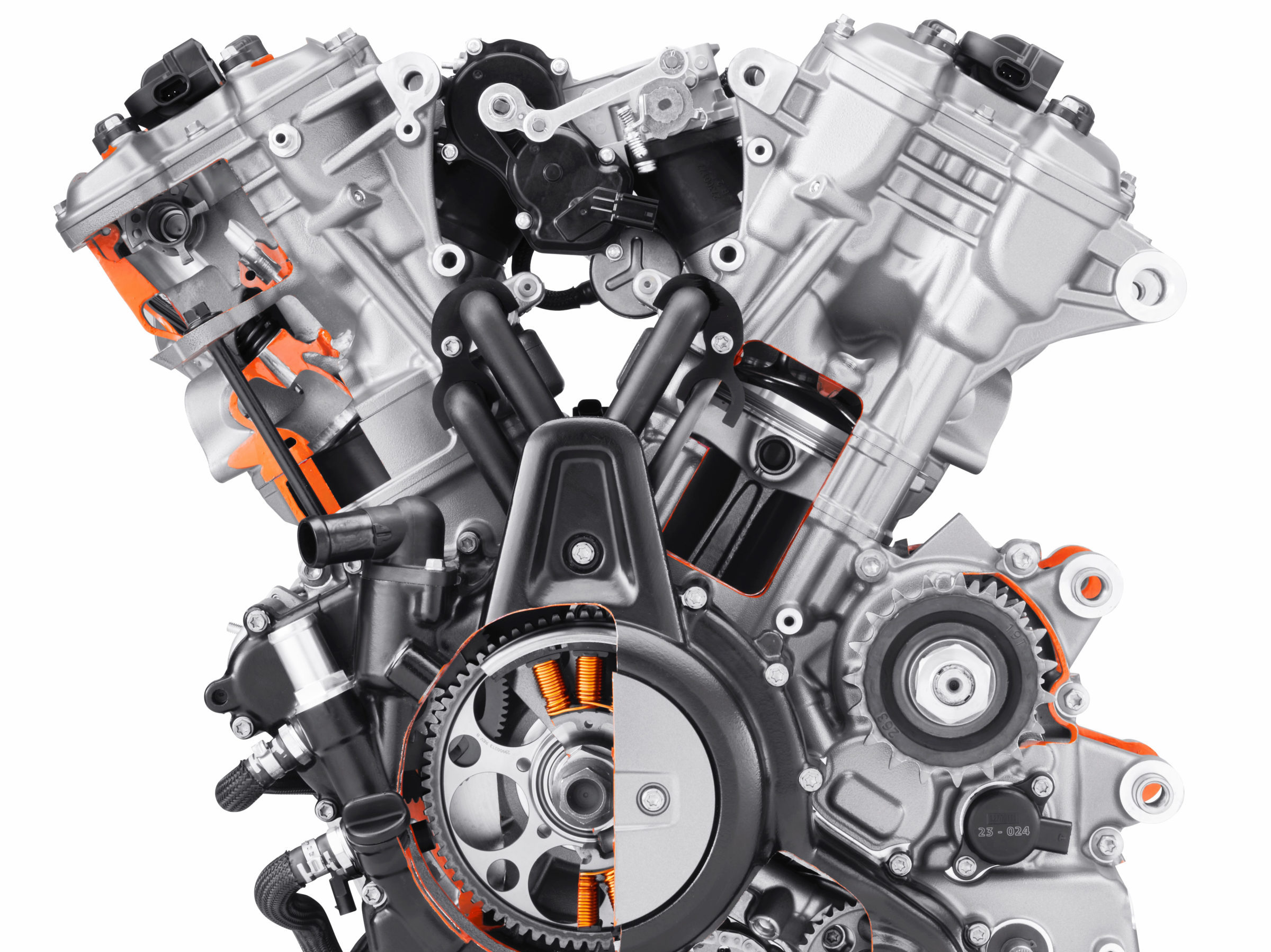

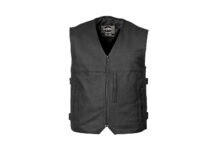
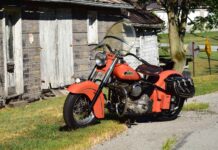
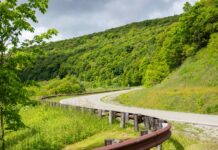












I have a question, what type of main and rod bearings are used in this new engine? Babbitt or roller, I have read three articles on this new engine and nobody has stated what this engine uses main bearings, most Harley engines used to use roller bearings, and the Harley street 750 engines I believe have Babbitt bearings, so what does this engine have?
Good question! The RevMax uses hydrodynamic babbitt bearings.
Sure looks like an updAted V-Rod engine to me.
It’s basically similar, but it’s actually a clean-sheet design, with no parts interchangeable.
Modern, Thoughtful Design……………….Made in USA.
Time to Come Home ?
Rode one when the demo trailer came to the local dealer. Not this grandpa’s Sportster! Fast, quick and handled well. Greatly enjoyed the test ride, came back with a huge grin. Expect I will keep my 1200 Roadster though. Thank you!
rode one when the demo trailer came to the local dealer. Not this grandpa’s Sportster! Fast, quick and handled well. Greatlt enjoyed the test ride, came back with a huge grin. Expect I will keep my 12oo Roadster though Thank you!
While it may have strong hp ratings the wimpy torque specs say it all as well as the lack of headroom and most importantly the fact that it has a “radiator” makes it just another crouch rocket! Wouldn’t wish it on my worst enemy!
Wimpy torque? It has 94 lb-ft compared to the 71 lb-ft of the air-cooled Sporty.
I have tried to discover iff the new engine is truly built in the usa all I can find is that it is assembled in Wisconsin.
So having said all that.
What can be done to increase power and who makes the parts already? I have been looking around for awhile now and can’t find anything, bolt on or getting into the engine. Well except for the TBR exhaust.
Any help is appreciated.
Avec les têtes du moteur de la Pan America tu peux aller chercher les 30HP
Selon vous, juste changer les têtes de moteur du sportster pour ceux du pan america je pourrais passer de 121HP a 150HP ?